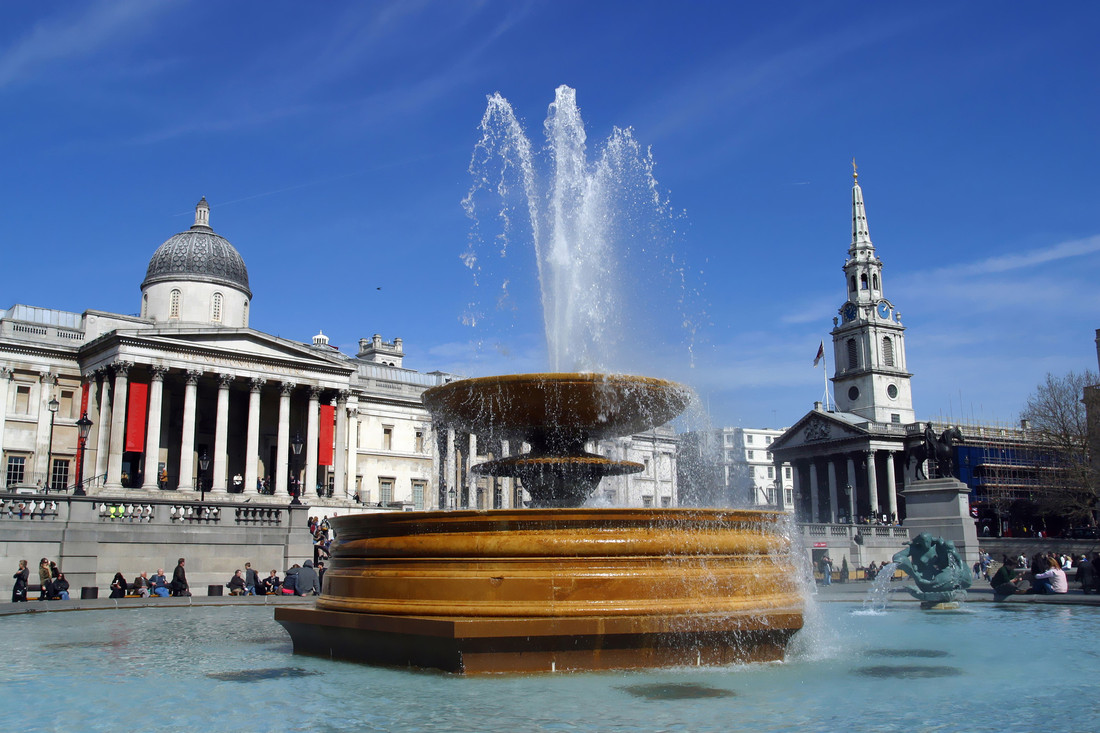For two centuries now, the National Gallery has stood as a bastion of artistic mastery and cultural heritage in the heart of London, exuding grandeur and historical significance while delivering a profound impact on generations of art enthusiasts, tourists and, notably, schoolchildren.
From the arresting strokes of Vincent van Gogh's ‘Sunflowers’ to the ethereal beauty of Leonardo da Vinci's ‘The Virgin of the Rocks’, the National Gallery houses an unparalleled collection that spans centuries. A home of artistic treasures, the National Gallery is, unsurprisingly, an educational beacon, inspiring the minds of budding artists and designers as they explore some 2,300 artworks.
But it’s not just art and design students that can benefit from a visit to this magnificent and historic gallery. In commemoration of its bicentennial milestone, this blog celebrates the numerous interactive tours and talks available to school groups, covering different curricular subjects as they bring the National Gallery paintings to life. Read on and discover the wide range of tours and talks available at the gallery, and which ones are suitable for art & design, history, classics, or even religious studies students.
1. Art through history: Renaissance, Baroque, Dutch painting of the seventeenth century, or Impressionism
In this talk, students will be given an overview of their chosen period, placed within the wider context of the history of art, to help make connections across time.
By looking at a few paintings in depth, they will explore the artistic style, themes, materials, and techniques of the time, and how the artworks of a period fit into broader social and political developments.
2. History through art
The paintings of the National Gallery span several major historical events (covering Western European History from 1250 to 1912), and serve as a useful record of a different time and place – such as the Renaissance paintings.
The materials artists had available and, as a result, the way paintings look, can teach students about changing times. For example, portraits can support students’ understanding of how wealth, power, and status were understood and conveyed through history; places and political contexts; changes in fashion and etiquettes; and the effects of significant cultural and technological changes over time.
3. Materials, techniques, and processes
Art and design students in particular benefit from this tour, during which they’ll spend time exploring different materials and processes that are used in the making of paintings, and their different properties. A specialist educator will explore each painting and technique visually with your students, giving them in-depth insights on how artists create, as well as differences in perspective, pattern, colour and light.
4. Myths and legends
On this tour, students can uncover a broad selection of myths and legends through the visual language of paintings, and gain more of an understanding of the genre. Specialist educators will encourage students to express their opinions and ideas about the stories explored, helping them in developing their own expressions and views. These narratives never fail to engage young people, and can be a great way of encouraging a different way of looking at paintings. Specific links can also be made for students studying Homer and Virgil.
5. Religion in art
With much of the National Gallery’s Renaissance and other early modern artworks steeped in religion, there are plenty of pieces within the museum for religious studies pupils to engage with.
On a ‘Religion in art’ tour, students are encouraged to consider how religious narratives can be represented in paintings. This is particularly true when studying the many artworks that depict The Annunciation, providing pupils with altering perspectives of this hugely significant event in Christianity.
School groups will also be guided in thinking about how artists represent moral ideas in Christian art – ideas of good and bad behaviour, the demands of family, sacrifice, and duty. Depending on which time of year you wish to visit, sessions may also act as a general investigation or focus on a particular festival, such as Christmas or Easter.
6. Still life, landscapes, or portraiture
On this tour, students will explore their chosen genre across the periods covered by the National Gallery’s collection, looking at how it has been approached by different artists, and observing changes made in the genre over time. Gallery educators will guide them through the key elements of composition in either still life, landscape or portraiture, encouraging comparisons of style and technique.
7. Techniques for visual analysis
This session searches through the gallery’s collection to find hidden symbols in paintings. Specialist educators will guide school groups in looking for clues and making connections between objects in the paintings explored. During this tour, students will develop their visual literacy whilst building their confidence in describing and discussing what they see.
Uncover the learning opportunities of the National Gallery
With its repertoire of talks and tours covering a variety of subjects, the National Gallery offers a fantastic educational experience for a range of school groups. What’s more, at Equity, we’ll collaborate directly with the gallery to tailor their talks and tours to your class’ specific learning objectives – ensuring the best educational opportunity for your group every time.
To find out more about our film & media, art & design, or politics school trips to London, or to enquire about a day trip to visit the National Gallery and more, please call us on 01273 648248. You can also fill out our webform, and our school trip experts will get back to you as soon as we can.






